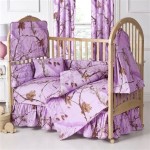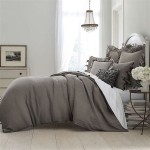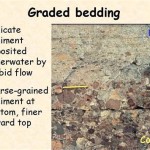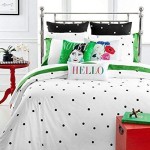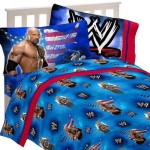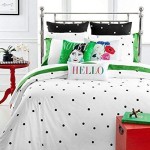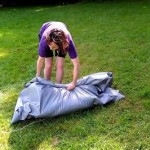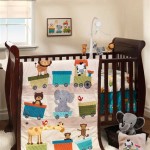Types of Bedding
Bedding encompasses all the materials that make up a bed, including the sheets, blankets, comforters, pillows, and mattress topper. Choosing the right type of bedding is crucial for a comfortable and restful sleep. Comfort, warmth, and aesthetic preferences are key factors to consider when selecting bedding. This article explores different types of bedding materials and their unique characteristics.
Cotton
Cotton is a natural fiber known for its breathability, softness, and hypoallergenic properties. It is widely considered the most popular bedding material due to its versatility and affordability. Cotton sheets are available in various thread counts, with higher thread counts generally indicating a smoother and softer feel. Egyptian cotton is known for its exceptionally long fibers, resulting in luxurious, durable sheets. Organic cotton is grown without pesticides and herbicides, making it a more sustainable choice. However, cotton can wrinkle easily, and its fibers can shrink with washing.
Linen
Linen is another natural fiber, derived from the flax plant. It is known for its durability, breathability, and moisture-wicking properties. Linen is a popular choice for warm climates as it helps regulate body temperature. It also becomes softer with each wash, making it a long-lasting investment. Linen is naturally resistant to bacteria and mildew, making it suitable for those with sensitive skin. However, linen can be more expensive than cotton and tends to wrinkle more easily.
Silk
Silk is a luxurious fiber known for its incredible softness, smooth texture, and temperature-regulating properties. It is also hypoallergenic and naturally resistant to dust mites. Silk is a popular choice for those with sensitive skin, as it is gentle on the skin and can help prevent irritation. Silk bedding is known for its luxurious feel and aesthetic appeal, adding an elegant touch to any bedroom. However, silk is the most expensive bedding material and requires special care, such as hand washing and dry cleaning.
Flannel
Flannel is a woven fabric that features a soft, brushed surface. It is typically made from cotton or wool, although other materials can be used. Flannel is known for its warmth and coziness, making it a popular choice for winter bedding. It is also soft and comfortable to sleep on. Flannel bedding is generally affordable and readily available. However, it may be too warm for warmer climates, and the fabric can pill with repeated washing.
Microfiber
Microfiber is a synthetic fabric made from polyester or nylon. It is known for its softness, durability, and wrinkle resistance. Microfiber bedding is generally affordable and easy to care for. It can also be found in various colors and patterns. However, microfiber is not as breathable as natural fibers, and it can generate static electricity.
Wool
Wool is a natural fiber known for its warmth, breathability, and moisture-wicking properties. It is a good choice for those who experience cold temperatures and prefer a natural material. Wool is also naturally fire-resistant and antimicrobial. However, wool can be itchy for some people, and it requires special care, such as hand washing or dry cleaning.
Polyester
Polyester is a synthetic fiber known for its durability, wrinkle resistance, and quick drying time. It is a popular choice for bed sheets and comforters due to its low maintenance and affordability. Polyester is also available in many colors and patterns. However, it can trap heat and is not as breathable as natural materials.
Bamboo
Bamboo is a natural fiber derived from bamboo plants. It is known for its softness, breathability, and moisture-wicking properties. Bamboo is also naturally antimicrobial and hypoallergenic, making it suitable for those with sensitive skin. Bamboo bedding is generally affordable and readily available. However, it may be less durable than cotton or linen.
Other Considerations
In addition to the type of fabric, it is important to consider other aspects of your bedding. Thread count refers to the number of threads per square inch of fabric, with higher thread counts generally resulting in softer and smoother sheets. The weight of the fabric can also impact your sleep comfort. Lighter fabrics are best for warmer climates, while heavier fabrics are more suitable for colder climates.
The filling of comforters and duvet inserts can also vary. Down is a popular choice for its warmth and loftiness, while alternative fillings such as microfiber, polyester, and wool provide similar warmth without the use of animal products. Finally, consider your personal preferences and budget when choosing bedding. There is a wide range of options available to suit every need and taste.

Planetspark English Teacher Interview Experience Questions Psat Test

Sunny Khaneja Gurugram Ha Professional Profile Linkedin

Guru Kashi University Placements 2024 Highest Package Top Recruiters

Kritika Saigal Senior Interior Designer Antaryaa Homes Linkedin

Priya Sethuraman Montessori Teacher At Carnival Kids School Linkedin

Ims Noida Placement 2025 Highest Package Average Top Recruiters

Wedlock Hotels Gurgaon Updated S 2025

Aditya Sharma Policybazaar Com Linkedin

Tanvi Agarwal Management Manoj Singhal Associates Linkedin

Top Guest House Weekly Al In Dausa Justdial

